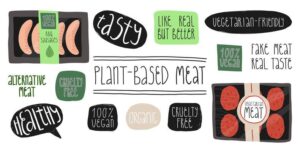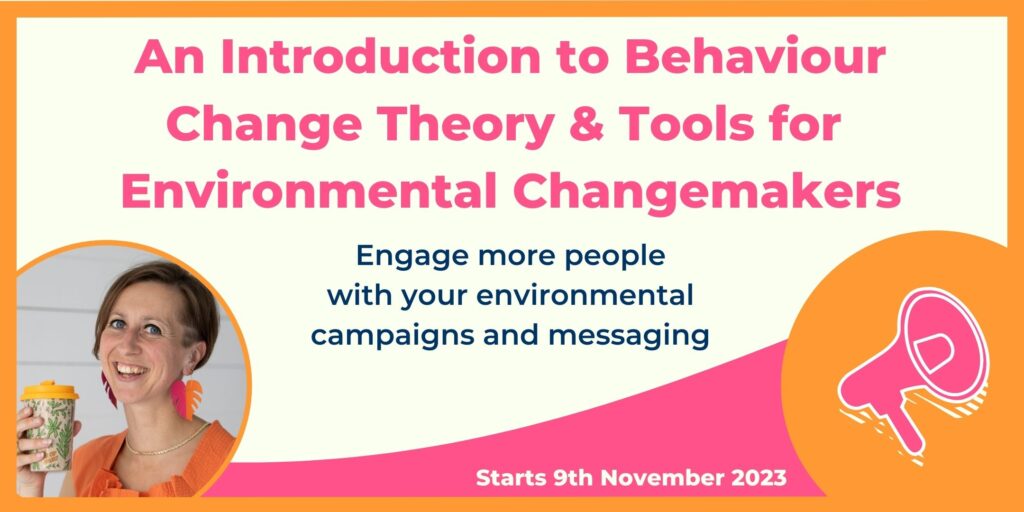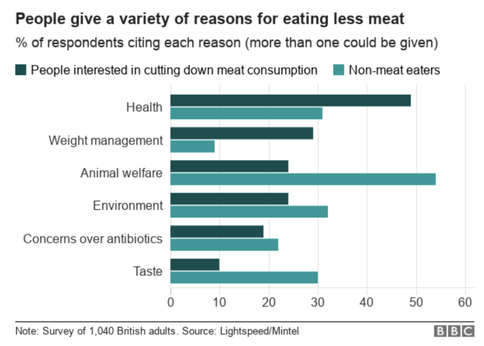From animal activists to buff bodybuilders: what the vegan movement can tell us about mainstreaming environmental products and behaviours
by Livvy Drake (Head Sustainable Sidekick)
1. Match messages to your audiences’ values
Health is a big driver for Millennials (born 1980-2000) and, more recently, Gen Z (dubbed Generation sensible). According to numerous studies they are exercising more, eating smarter and smoking less than previous generations.
Going vegan for animal welfare, the environment or health are all value-driven choices and values can influence behaviour. This highlights that pro-environmental behaviours can be adopted and achieved by those who hold other values as long as the messaging about the behaviours resonates with those values.
Takeaway: If the audience being targeted is concerned about health, communications can be broadened out to focus on the health benefits of pro-environmental behaviours such as active travel or reducing food waste.
Similarly, if an audience is known to hold more hedonistic values, describing the joy and pleasure associated with behaviours like slow travel, gardening or upcycling might be more effective. This is also a more positive framing that focuses on the benefits to human and planetary health rather than the feelings of guilt, shame and cognitive dissonance that can arise when discussing negative impacts.
2. Choose your messengers wisely

Takeaway: How does your audience perceive people who take part in the activity you are promoting (e.g. zero-waste shopping or going to protests)? Are they relatable to people outside of the green echo-chamber? If not how can this perception be broken down? Who else can be the messenger? Fascinatingly, messengers can be people or organisations perceived to hold authority, such as supermarkets and brands.
For example, when supermarkets ran a trial on shopping bag taxes, people felt more comfortable taking their reusable shopping bags because the supermarket had authorised it! ( Study)
3. Understand pleasure, pain and friction

- have low motivation
- have low patience
- hate doing anything
- try to complete tasks as quickly as possible
In other words we have to remove the friction from a behaviour and design “a path of least resistance”.
(Dan Ariely on Changing Customer Behavior)
Historically, eating out as a vegan and vegetarian involved none of the pleasure (boring food) and all of the pain (hard to find, overpriced) – trust me, I did it for 30 + years before things changed for the better. The wider availability of a tempting variety of interesting, tasty meat-free meals and substitutes that directly replace meat remove the friction and the pain of changing diets for many people.
Takeaway: What are the frictions and pain points with other environmental behaviours or product switches?
How can these frictions be removed? How can pleasure be brought into the scenario?
4. Focus on the benefits and not the loss

For example, when I was working at Shambala festival in 2016, it announced it was going ‘meat and fish free’. Social media was afire with complaints, with some people even claiming it was a violation of their human rights.
However, the festival booked the most delicious, interesting and satisfying food traders. As a consequence, 77 % of the audience voted for Shambala to remain meat and fish free, and 52%said they had changed their diets since the event. In hindsight, I wonder if announcing the festival was going ‘plant-based’ would have had a more positive response, as it focuses on the positive and not the ‘loss’ of meat and fish.
Takeaway: Where possible, frame environmental choices in terms of the positive benefits rather than loss or sacrifice. For example, instead of talking about how I have given up flying, I always talk to people about the benefits of slow-travel and the amazing experiences I have on trains.
Want even more behaviour change tips?
Are you working on sustainability initiatives in your workplace or looking to engage people in change.

Join these workshops to inspire your work and add behavioural science thinking into your tool box


10% of all online courses go to grassroots charities.
20% of all consultancy and bespoke workshops go for rewilding.
50 free places are awarded to campaigners from underrepresented communities each year.

